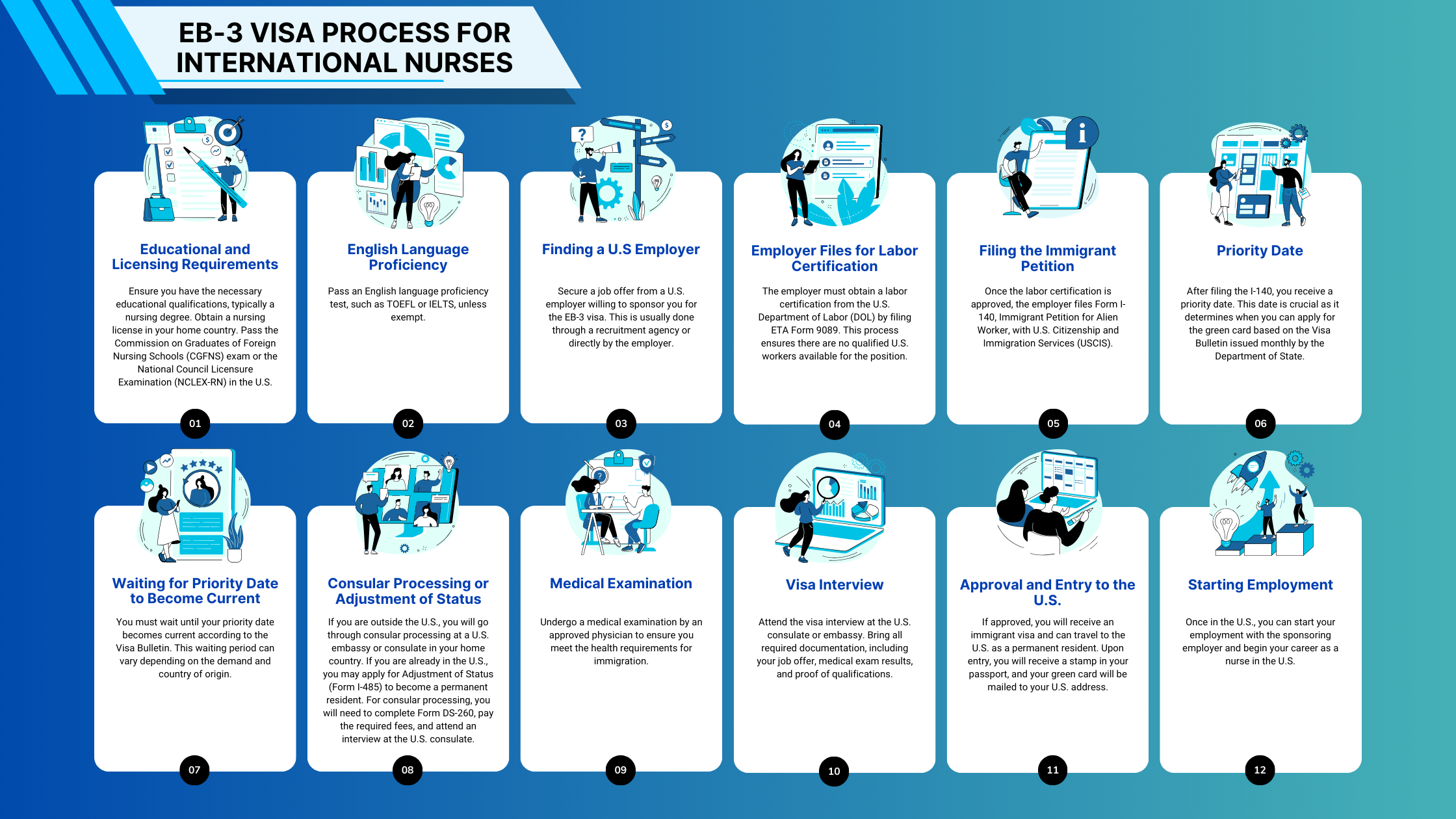Jobs in USA
Fun Facts about the United States:
- The United States is home to the world’s largest economy and a diverse cultural landscape.
- The Grand Canyon, one of the Seven Natural Wonders of the World, is located in Arizona.
- The US has 59 national parks, preserving natural beauty and wildlife across the country.
Demand for Registered Nurses in the US
The demand for registered nurses (RNs) in the United States is at an all-time high. With an aging population, increased prevalence of chronic diseases, and an expanding healthcare sector, the need for skilled nursing professionals continues to grow. The Bureau of Labor Statistics (BLS) projects that employment of registered nurses will grow by 7% from 2022 to 2032, faster than the average for all occupations.

Process of EB3 visa for International Nurses

EB-3 Visa Process for International Nurses
Step 1: Educational and Licensing Requirements
- Educational Qualifications: Ensure you have a nursing degree.
- Licensing: Obtain a nursing license in your home country.
- Exams: Pass the CGFNS exam or the NCLEX-RN in the U.S.
Step 2: English Language Proficiency
- Tests: Pass an English proficiency test like TOEFL or IELTS, unless exempt.
Step 3: Finding a U.S. Employer
- Job Offer: Secure a job offer from a U.S. employer willing to sponsor you for the EB-3 visa, usually through a recruitment agency or directly by the employer.
Step 4: Employer Files for Labor Certification
- Labor Certification: The employer must file ETA Form 9089 with the U.S. Department of Labor (DOL) to ensure no qualified U.S. workers are available for the position.
Step 5: Filing the Immigrant Petition
- Form I-140: Once the labor certification is approved, the employer files Form I-140 with USCIS.
Step 6: Priority Date
- Receiving a Date: After filing I-140, you receive a priority date which determines when you can apply for a green card based on the Visa Bulletin issued by the Department of State.
Step 7: Waiting for Priority Date to Become Current
- Visa Bulletin: Wait until your priority date becomes current according to the Visa Bulletin. This wait time varies based on demand and your country of origin.
Step 8: Consular Processing or Adjustment of Status
- Outside U.S.: Go through consular processing at a U.S. embassy or consulate in your home country by completing Form DS-260, paying fees, and attending an interview.
- Inside U.S.: Apply for Adjustment of Status (Form I-485) to become a permanent resident.
Step 9: Medical Examination
- Health Check: Undergo a medical examination by an approved physician to meet health requirements for immigration.
Step 10: Visa Interview
- Interview: Attend the visa interview at the U.S. consulate or embassy with all required documentation, including your job offer, medical exam results, and proof of qualifications.
Step 11: Approval and Entry to the U.S.
- Immigrant Visa: If approved, you will receive an immigrant visa to travel to the U.S. as a permanent resident. Upon entry, you’ll get a passport stamp, and your green card will be mailed to your U.S. address.
Step 12: Starting Employment
- Begin Work: Start your employment with the sponsoring employer and begin your career as a nurse in the U.S.